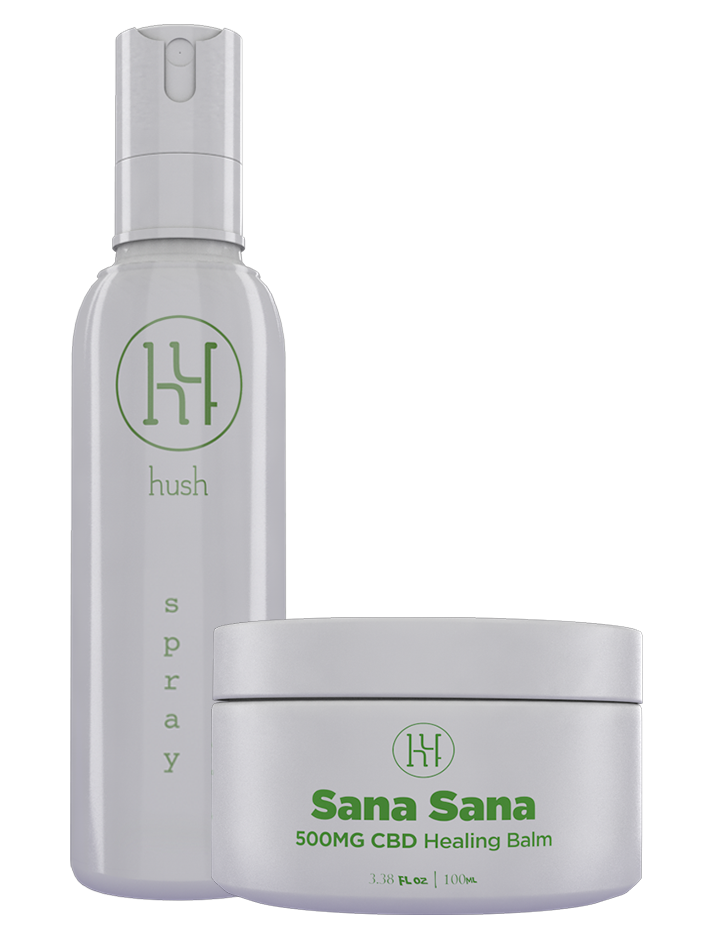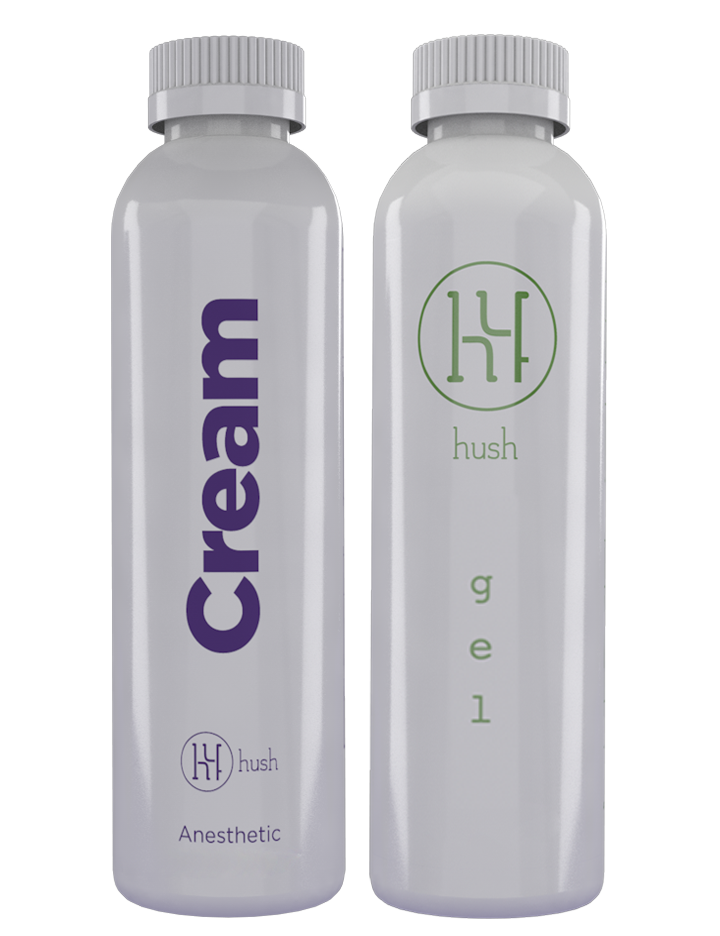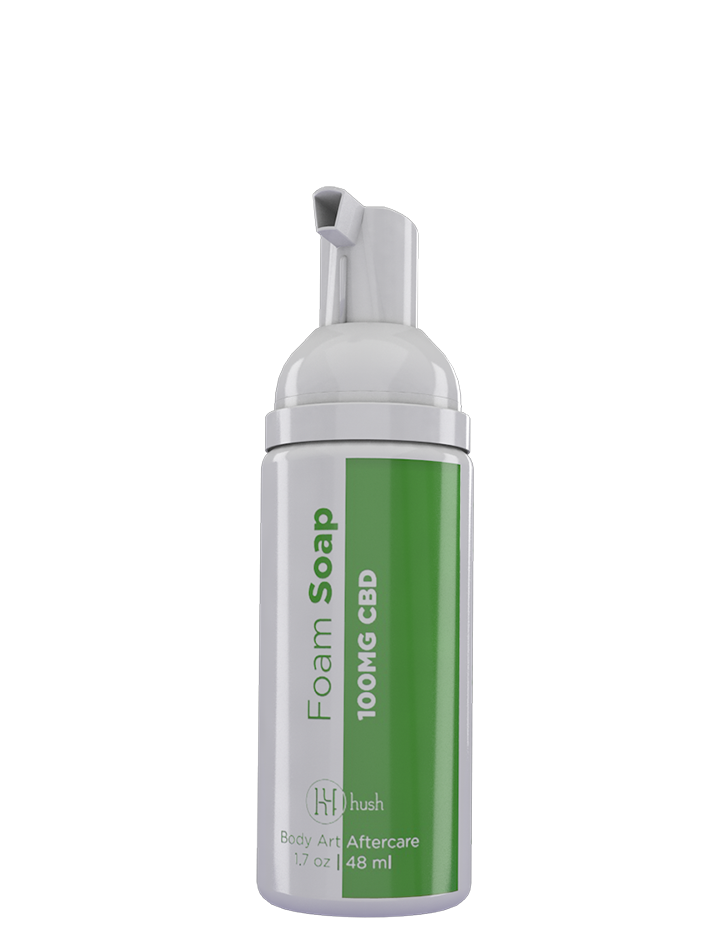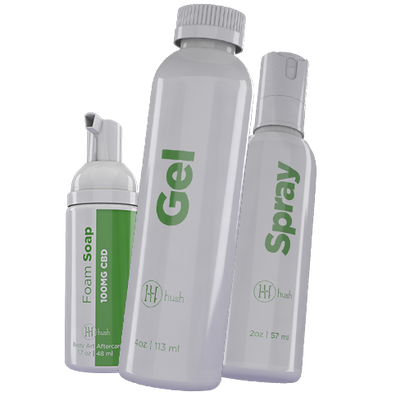
$14.99
Getting a tattoo is exciting, nerve-wracking, and, let’s face it, a bit painful. Whether it's your first tattoo or you're adding a new one to the collection, the idea of a needle stabbing you thousands of times can make you feel a bit apprehensive. There are plenty of ways to make the experience more comfortable or maybe even enjoyable.
Let's dive into 10 tried-and-true tips to reduce tattoo pain and keep you comfy during your next session.
Why Do Tattoos Hurt?
When you get a tattoo, a needle (or multiple needles for bigger tattoos) punctures your skin anywhere from 50 to 3,000 times per minute. It’s not messing around.
This needle is making little vortexes in your skin that rapidly suck up the ink from the outer layer of your skin, called the epidermis, down into the deeper layer, called the dermis. The dermis is where all your nerves are hanging out, just waiting to send those pain signals up to your brain.
Why so deep? Well, if the ink just stayed in the top layer, it would flake off with your skin cells as they shed. By going deeper, the tattoo is permanent, becoming part of you forever.
Now, not all body parts feel the same amount of pain. Some spots are just more sensitive. Areas with thinner skin, like the ribs, feet, and hands, have less padding between the needle and your nerves.
Your brain releases stress hormones when you’re in pain, making you more aware of the sensation. Some people even feel a bit of an adrenaline rush, which can make the pain feel sharper or even imperceptible. Adrenaline is a funny thing. It can either help you or make things worse.
Factors like anxiety can also impact your perception of pain. If you're really nervous and completely convinced that your tattoo is going to feel like torture, you're creating a self-fulfilling prophecy. Your anxious state of mind will make you hypervigilant, which can cause you to focus heavily on the pain. The calmer you are, the less intense the sensation will be.
1. Choose a Good Time for Your Tattoo Appointment
Timing is everything. If you’re sleep-deprived, hungover, or stressed out, everything is going to compound. If you already feel awful when you walk into your appointment, you're going to feel even worse when you walk out.
Pick a day when you're well-rested and calm. Avoid booking appointments right after stressful events or when you’re sick. Swap the hard seltzer for water for a day or two before your appointment and eat meals your doctor would be proud of.
Also, consider the time of day. If you’re not a morning person, avoid booking that 9 a.m. slot. You'll feel much better if you need the extra sleep. If afternoons or evenings are your power hours, go for that. Being mentally and physically prepared can make a huge difference in how you feel.
2. Eat a Good Meal Beforehand
Having a good meal before your tattoo appointment can actually help reduce the pain. Why? Because getting a tattoo on an empty stomach is like begging for your blood sugar to plummet. Low blood sugar can make you feel dizzy, weak, and more sensitive to pain.
Grab a balanced meal with some protein and healthy carbs. Bananas are a great pre-tattoo snack since they provide natural sugars, potassium, and a bit of fiber to keep you full. If you're not feeling hungry before your appointment, grab a smoothie or a protein shake to sip during your session.
3. Hydrate Like You Mean It
We all already know this, but sometimes we need a reminder: water is vital. Staying hydrated keeps your skin healthy, making it more resilient to the tattooing process. Dry skin is more sensitive, which means you’ll feel the needle dragging and pulling. Drinking water before (and after) your tattoo session will help reduce sensitivity and promote healing.
Drinking water can prevent you from feeling sore or lightheaded. It's also important for the healing process because new tattoos weep a lot of fluid. Drink up and replenish the stores.
4. Tattoo Numbing Cream Saves the Day
Tattoo numbing cream can be a lifesaver, especially if you’re getting inked in a notoriously sensitive spot (looking at you, ribs, and feet). These creams contain ingredients that numb the skin, making the sensation much more manageable.

HUSH tattoo numbing cream was designed with you, your tattoo, and your tattoo artist in mind. A thick layer of numbing cream will work to take the edge off, turning the discomfort down to a dull roar that's much easier to live with throughout your session.
Typically, you’ll want to apply the numbing cream about an hour before your appointment. Wrap it up to keep the cream from rubbing off on your clothes or the arms of your chairs. When you're ready, remove the wrap and wipe away the cream. You'll be numbed up and good to go.
5. Practice Deep Breathing (and Maybe a Little Meditation)
Getting a tattoo has little in common with Lamaze or yoga, but the breathing techniques used in both cases are pretty solid. When you feel the pain starting to crank up, take a few slow, deep breaths in through your nose, hold for a second, and exhale slowly through your mouth. This helps to calm your nerves and can actually reduce your perception of pain.
Some people find that focusing on mental images makes it easier to meditate. Basically, thinking about anything other than what's happening will work to divert your attention elsewhere. Dream away. Picture a tranquil mountainside or write weird fan fiction in your head—whatever works to occupy your brain power.
6. Bring Distractions
Sometimes, the best way to get through pain is to take your mind off it. So, pack some entertainment: make a playlist, pick a podcast, or listen to an audiobook. If your artist is cool with it, watching a show or movie on your phone can be a great distraction, too.
Artists will generally let people do whatever they want (within reason) during a session as long as the activity isn't disruptive and it won't prevent them from sitting still. Bring your headphones and be mindful not to move around too much.
7. Choose the Right Tattoo Placement
Areas with more muscle or padding (like the shoulder, upper arm, or thigh) hurt less than areas with thin skin and lots of nerves (like the ribs, feet, or hands). If you’re a first-timer, consider starting in a less painful spot and working your way up to those more sensitive areas later.
If you’ve got your heart set on that intricate ribcage tattoo, don't let our advice stop you. Give some careful consideration to whether or not you'd regret changing your placement to prioritize your comfort.
The pain of a tattoo is one and done—will you regret putting it somewhere else instead of sticking it out? You're the only one who can answer that question. Make sure you're confident in your choice.
8. Take Breaks, But Not Too Many
Most tattoo artists are happy to give you short breaks during the session, especially if you’re working on a large piece or sitting for multiple hours. Taking a little time to stretch or sip water can give you a mental and physical breather.
Trust us, your artist will likely want a break after two or three hours. A great time to ask for a break is between completing the outline and adding color. Your artist may need a minute to change their setup, so if you need to take 10, that's the best time to do it.
Just don’t take too many breaks. Repeated stopping and starting can make the pain feel more intense when you go back in. The pain feels less intense when you get used to it. If you don't allow yourself to fully acclimate or if you take a lot of breaks, you'll never adapt.
9. Stay Calm and Communicate With Your Artist
Your tattoo artist has seen it all. If you're having a hard time coping during your session, it won't be the first time they've had someone in their chair who wasn't having a great time.
Don’t be afraid to let them know if you’re feeling anxious or if you’re in pain. They’ll usually be happy to help talk you through it or give you a little extra time to breathe.
Some artists even have tricks up their sleeves to help make the process smoother and more comfortable. The better the communication between you and your artist, the more comfortable you'll both feel, and you’ll end up with a tattoo you love without feeling like it was the worst experience ever.
10. Remember: It’s Temporary, and the Result Will Be Worth It
Remind yourself that the pain is temporary. Once it’s over, you’ll have an amazing piece of artwork that you can wear proudly for the rest of your life.
And trust us, once that tattoo heals, you'll barely remember the discomfort. That's why so many people go back for more. They lived through the first time, and with each new tattoo, things were a little easier.
How Can I Relieve Pain After a Tattoo Session?
When your artist slaps on the SaniDerm and sends you home, the hardest part is over. You'll still have a little bit of discomfort to contend with over the next few days, but it'll be much less intense.
Many people describe the beginning of the healing process as more annoying or aggravating than painful. Whether you consider it painful or a nuisance, you'll benefit from some tips on coping.
Listen to Your Tattoo Artist’s Aftercare Instructions
Always listen to the expert. Your tattoo artist knows what they’re doing, and they’ll give you specific aftercare instructions tailored to your tattoo. Follow them to the letter.
They'll usually tell you when to remove the bandage, how to clean the tattoo, and what type of ointment to use. Skipping these instructions can increase your risk of infection, which is a whole new level of pain you really don’t want to mess with.
Keep It Clean and Moisturized (But Not Drenched!)
Your new tattoo is basically an open wound, so keeping it clean is crucial. Gently wash it with unscented, mild soap and lukewarm water, then pat it dry with a clean towel. Don’t rub or scrub. Think of it like patting a baby’s cheek, not scrubbing a dirty pan.
After it’s clean, apply a thin layer of tattoo-friendly ointment (like HUSH tattoo balm). A thin layer will keep your skin perfectly hydrated while supporting your body's natural healing process.
Avoid Tight Clothing
You don't really need an excuse to live in sweats or loose T-shirts for a few days, but a new tattoo is the perfect reason to prioritize comfort. Tight clothing can rub against your new tattoo, irritating the skin, wrecking your new ink, and causing pain. Give your tattoo room to breathe.
Also, stay clear of any rough or scratchy fabrics that could cause extra discomfort. Cotton is perfect. Treat yourself to a set of loose silk pajamas if you haven't already.
Spritz Your Tattoo With Some Numbing Spray

HUSH tattoo numbing spray is the missing link in the perfect aftercare routine. Our tattoo numbing spray nourishes and protects your tattoo while it's healing, and its numbing ingredients take the edge off the discomfort.
Bonus tip: numbing spray also works during the itchy, peeling phase to help you fight the temptation to scratch your healing tattoo.
Pain Relievers (But Check First!)
Over-the-counter pain relievers, like ibuprofen or acetaminophen, can help take the edge off the soreness. You may want to avoid aspirin, as it can thin your blood and potentially increase bleeding. It’s always a good idea to check with your tattoo artist or even your doctor before taking pain meds, especially if you have any health conditions.
Say No to Alcohol
We know it’s tempting to toast to your new ink, but alcohol can thin your blood and slow down the healing process, which can actually make the pain worse. Alcohol seriously dehydrates your body, and your body heavily relies on water while it's healing.
Plus, drinking might make you a little less careful, and the last thing you want is to bump, scratch, or lean on your fresh tattoo. Save the celebration for a few days down the road when your tattoo is a little less tender.
Become a Vampire
Well, don't literally become a vampire. We're talking more about an immersive vampire cosplay for a few weeks. Your healing tattoo is ultra-sensitive to UV rays. Sun exposure can cause major irritation, making the pain worse and potentially damaging the ink.
If you’re going outside, keep the tattoo covered with loose clothing. Definitely don’t use sunscreen on a new tattoo until it's fully healed.
Get Plenty of Rest
Your body’s natural healing process kicks into gear while you're asleep. Sleep helps reduce pain, stress, and inflammation. Prop yourself up if the tattoo is in a place that’s easy to bump or rub during the night.
Pro tip: If you have a new back tattoo, maybe don’t flop down on your back right away. You might need to change your sleeping position to accommodate your tattoo. It helps to get used to changing your sleeping position before you get your new tattoo, so you'll rest easier after your session.
Stay Away From Pools, Hot Tubs, and Oceans
Submerging your fresh tattoo in water is a no-go, no matter how relaxing it sounds. Pools, hot tubs, and oceans are full of bacteria, which can increase your risk of infection and pain. Your bathtub at home is also off-limits until you’re fully healed.
Watch for Signs of Infection
A little redness and soreness are totally normal, but if you notice intense pain, pus, fever, or swelling that’s getting worse, it could be a sign of infection. Don’t try to tough it out—get it checked by a medical professional ASAP.
Taking care of an infection early on can save you from a whole lot of pain and serious risks to your health. Always use antibacterial soap to wash your tattoo, and avoid going to germy places (like bars or concert venues) while you're healing.
Wrapping It All Up
Getting a tattoo may not be the most pleasant experience, but it doesn’t have to be a torture session. With the right mindset and a few handy tricks, you can power through your session and come out with some fresh, beautiful ink.

The HUSH tattoo session bundle is packed with everything you need for a comfortable tattoo and an easy healing process. Follow your artist's instructions after your tattoo, but trust your intuition before your tattoo. Take good care of yourself and numb up—why deal with pain when you don't have to?
Sources:
That tattoo needle doesn’t do what you think it’s doing | Science
Stress effects on the body | American Psychological Association





